Avenger 3 Pro for blackwork tattoos

In blackwork, the success of the tattoo depends completely on how strong your solid black looks. Every field of ink and every strip of negative space has to read clearly from a distance and stay sharp over time. To support that, the machine has to stay powerful and predictable through long sessions.
The Avenger 3 Pro is a wireless tattoo machine that can be tuned specifically for blackwork. This article explains what defines blackwork tattoo style and how to use the Avenger 3 Pro to build deep, even black while keeping skin trauma under control.
What is Blackwork tattoo style?
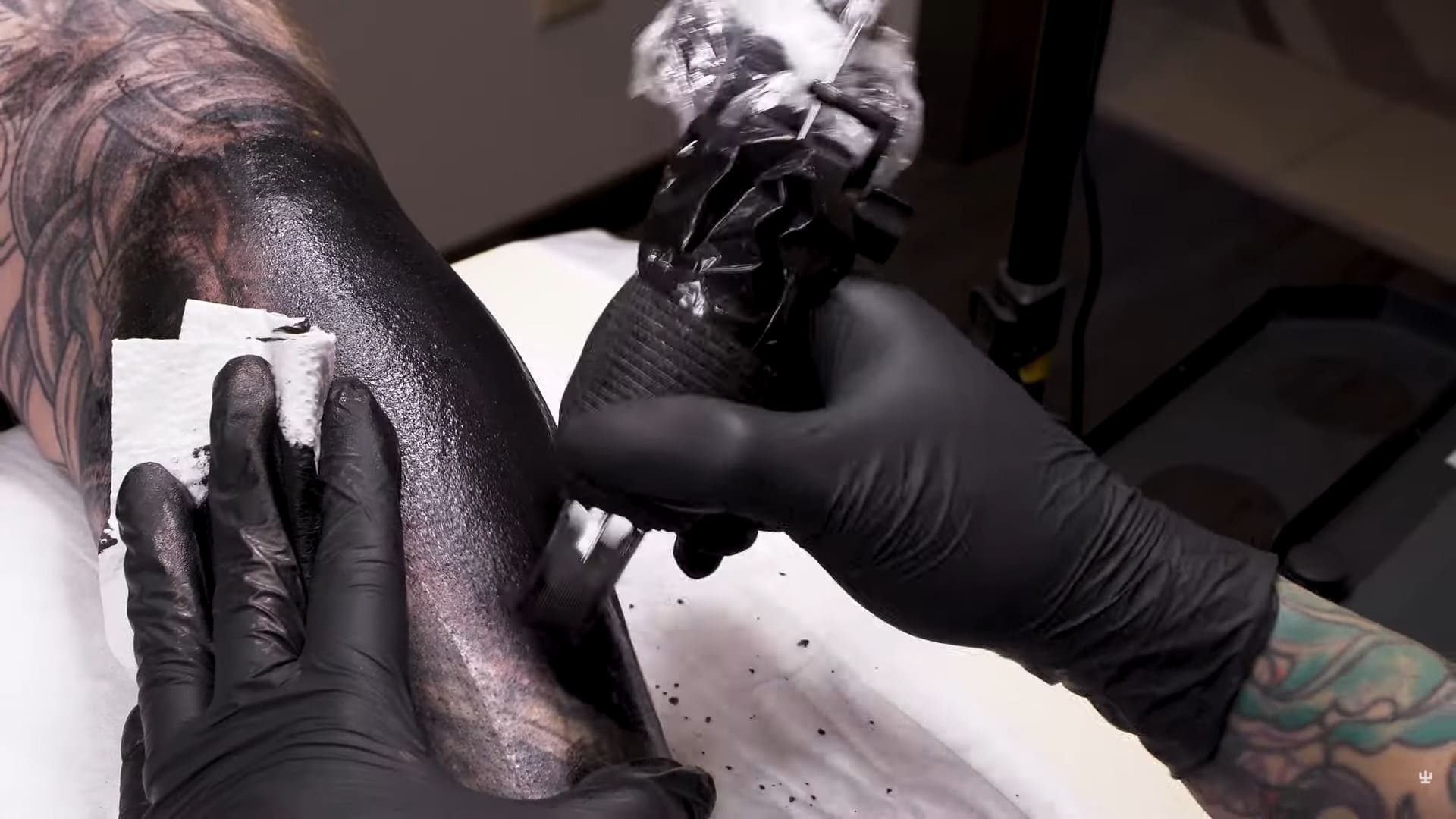
Blackwork is more than just a lot of black ink. It is a graphic approach built on solid fill, sharp contrast and carefully planned negative space.
What really defines blackwork tattoos
Blackwork tattoos are constructed from solid planes of black ink rather than colour or soft grey washes. Many studios use a simple rule: if the tattoo is made only with black pigment, with no added colour or grey shading, it can be considered blackwork. The style relies on bold silhouettes and clean edges, so any flaw in linework or fill is easy to see.
Popular branches include tribal and Polynesian-inspired patterns, geometric designs, ornamental motifs, dotwork and engraving-style shading, dark art themes, and lettering built in pure black. Whatever the subject, all of these approaches rely on heavy black ink, precise control, and smart use of negative space.
All of these branches share the same technical core. That is exactly where the Avenger 3 Pro wireless power, MultiStroke options and low-frequency stability become practical tools rather than just specs on a product page. The way this wireless platform compares to a wired Avenger 2 Pro setup in broader studio use is examined in Avenger 2 Pro vs Avenger 3 Pro: Is the Wireless Upgrade Worth It?.
Why Blackwork puts extra demands on your tattoo machine

Blackwork looks minimal, but it is one of the most demanding styles for hardware and technique. Large solid areas, long passes, and crisp edges will expose any weakness in power, consistency, or comfort.
Solid fill, lines and healing
Blackout sections and wide fields of black require the artist to move a lot of pigment into the skin, often with large magnums. If the machine lacks torque or runs unevenly, the result is striping and patchy coverage that heals lighter than planned. Pressing harder to compensate only increases the risk of blowouts and muddy edges. Because blackwork often covers large areas, the margin for error in trauma is small. Reworking the same zone again and again leads to tissue breakdown and prolonged healing, while under-packed ink leaves lighter patches. A suitable machine needs to provide enough power so the artist does not have to force the needle and stay smooth so density can be built gradually, which keeps blackwork deep and readable over time.
Avenger 3 Pro: a wireless tattoo machine built for blackwork
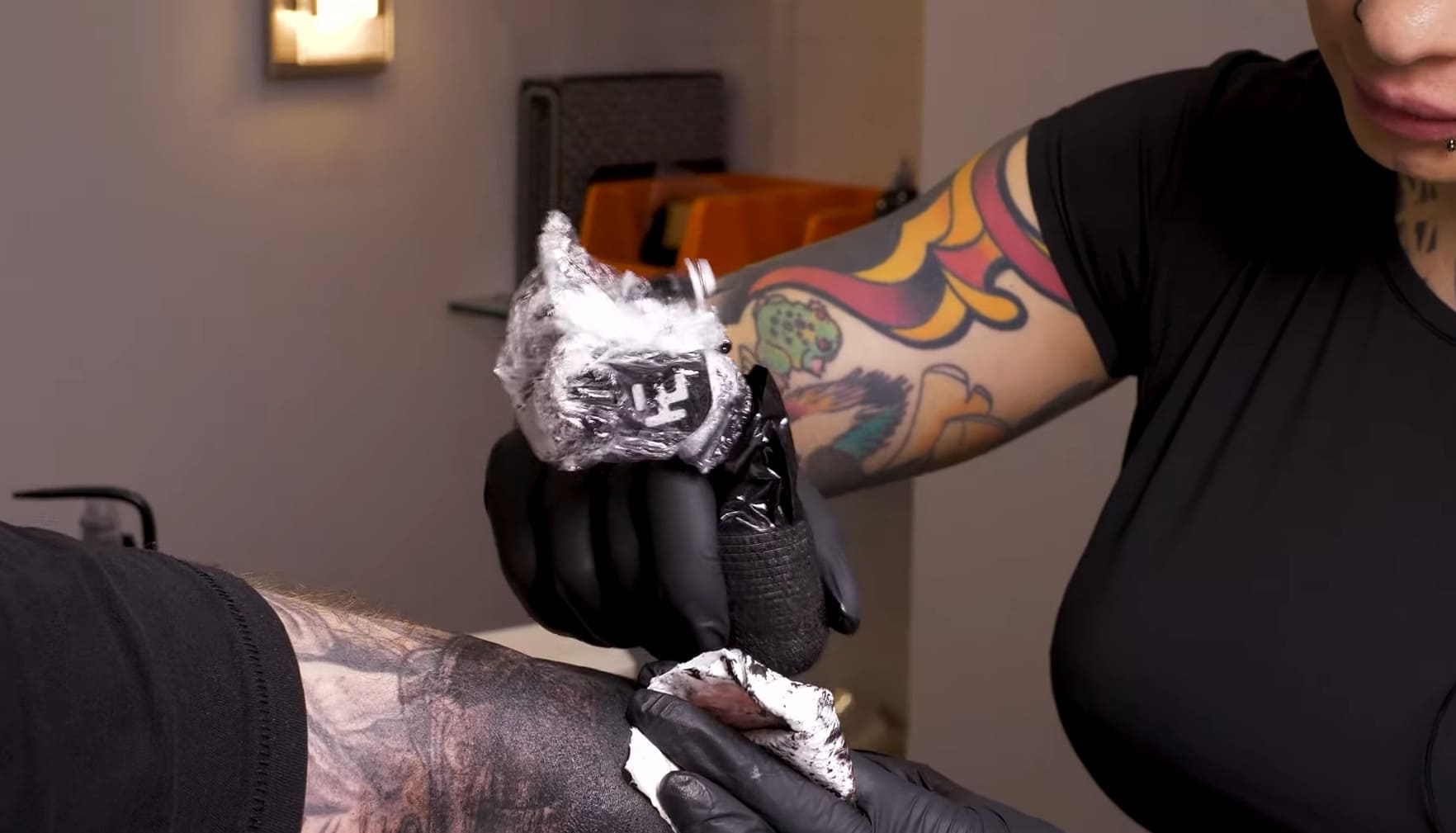
Blackwork demands even saturation, controlled trauma, and fast coverage. In Galina Moss workflow, the Avenger 3 Pro is treated as a dedicated blackwork tool, with stroke, frequency, grip, and needle choice tuned to efficiently and safely cover large areas of skin with solid black.
Stroke, grip and needles
For blackwork, Galina usually sets the Avenger 3 Pro to a 4.7 millimetre stroke and adjusts it based on skin type and whether the piece is a cover-up. Thicker or previously tattooed skin can handle a slightly stronger throw, while thin zones such as the inner arm need a gentler setup. She uses a 36 millimetre grip to add weight and balance, which helps overcome the resistance of large needle groups.
For maximum coverage, she works with large flat magnums with 0.35 millimetre needles. This combination is fast and efficient for broad fields of black but can be traumatic if handled carelessly, so it rewards confident technique. Needle projection is set so the needles sit flush with the tip at the top of the stroke and then adjusted during the session based on how the skin responds.
Frequency, motion, and comfort
In demonstrations, the Avenger 3 Pro runs at a fixed high speed of about 110 hertz, and beginners are advised to start at a lower speed. At this speed, Galina uses a pendulum motion, moving back and forth with a slight effort toward herself and no effort away, gradually shifting sideways like a printer. The goal is to deposit as much pigment as possible without over-traumatising the skin, so the number of passes is limited and dictated by skin type.
Preparing the machine also means choosing suitable black inks and barrier protection. Thicker formulas are reserved for difficult cover-ups or old tattoos, while standard blacks work well on easier skin. The machine is wrapped in transparent sleeves so the screen and controls remain visible, and large ink caps are used because dense black settles quickly and has to be shaken and refilled often. Although large needle groups often feel less sharp than fine liners, overall skin damage builds up quickly on big blackwork projects, so many clients can only tolerate two to three hours of continuous work, and longer pieces are broken into several sessions.
Avenger 3 Pro in action: blackwork tattoo process
Once the Avenger 3 Pro is set up, blackwork becomes less about fighting hardware and more about following a clear process.
Watch the video to learn how to use Avenger 3 Pro for Blackwork tattoo style:
From structure to solid black
The first step is to establish structure. The artist thinks in shapes and borders, not small details, and uses a mid-stroke with a liner or small magnum for main outlines and internal lines. After the frame is set, the setup switches to long stroke, large mags, and dense black. The artist moves from a mid-stroke to the blackwork stroke, then works section by section using a pendulum or slow circular motion. The machine’s weight, not extra hand pressure, pushes the needles into the skin. Once an area looks matte and velvety rather than smooth and glossy, it is time to move on rather than polish.
Texture, gradients and negative space
Blackwork does not have to be flat. Gradients, dotwork, and textures can all be created without leaving the black and skin palette. For softer transitions, the stroke can be shortened slightly and hand speed reduced. For dotwork and engraving-style textures, a smaller magnum or round shader and slower passes give better control. Negative space is treated like ink, with clear, intentional edges, so the final piece feels solid but still breathable.
Is Avenger 3 Pro the right choice for your blackwork?
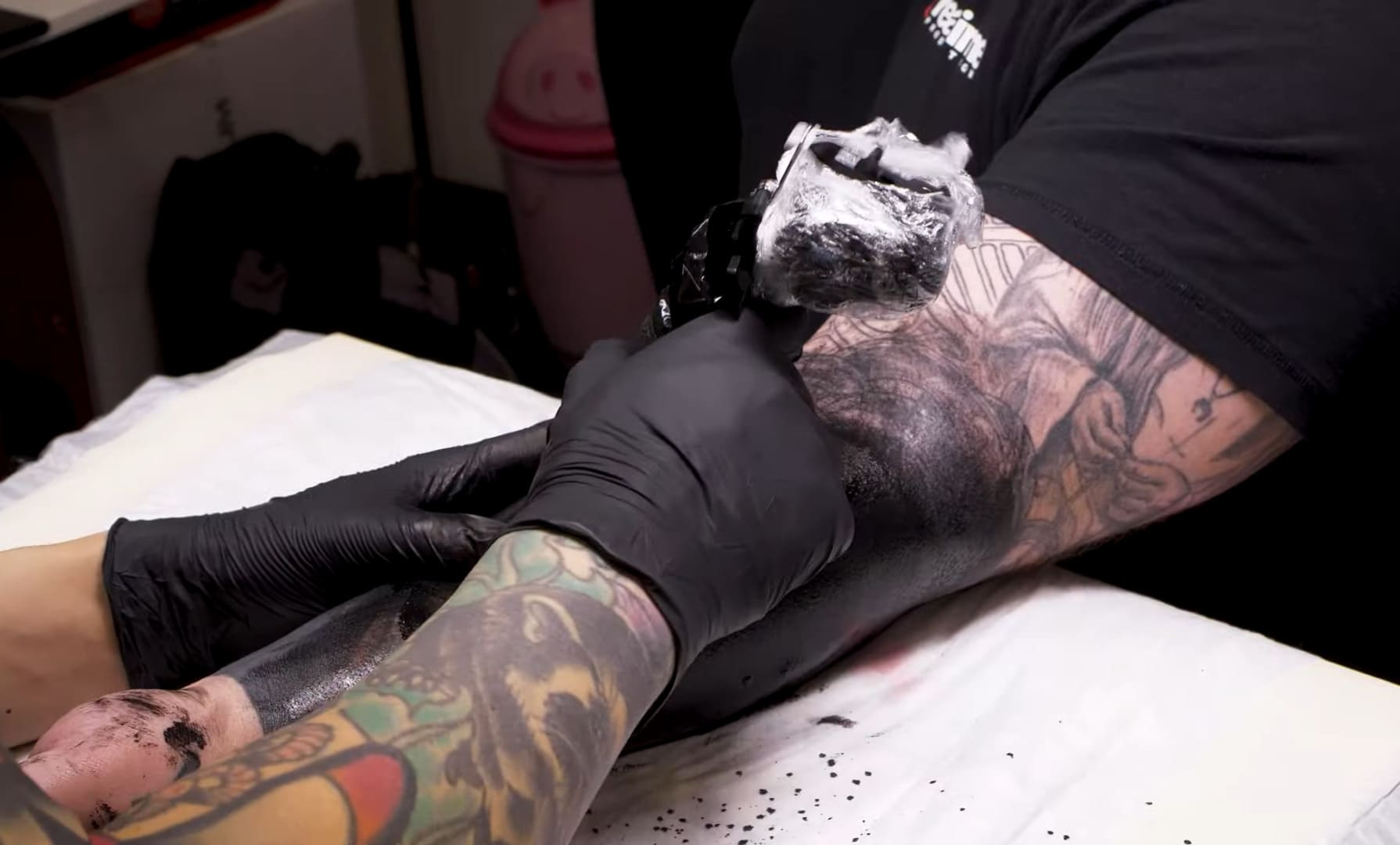
Blackwork exposes strengths and weaknesses in any setup, so it is worth deciding how the Avenger 3 Pro fits into your workflow. It is best suited to artists who regularly work with large, solid fields of black, such as sleeves, backs, or large geometric and ornamental pieces, and who can benefit from a long, powerful stroke, stable high frequency, and a wireless, balanced body.
For artists who mix blackwork with fine-line, neo-traditional, or illustrative work, the Avenger 3 Pro can serve as a flexible daily driver. The stroke range lets it move from bold fill to more controlled shading without changing machines, and the wireless format keeps movement around the client easy. If the main focus is small pieces or very delicate linework, a lighter machine with a shorter stroke might be more comfortable for daily use. At the same time, the Avenger 3 Pro can be reserved for big blackwork projects and any job where heavy, reliable black packing is the priority.

-550x550.jpg) Avenger 3 Pro Blood Money
Avenger 3 Pro Blood Money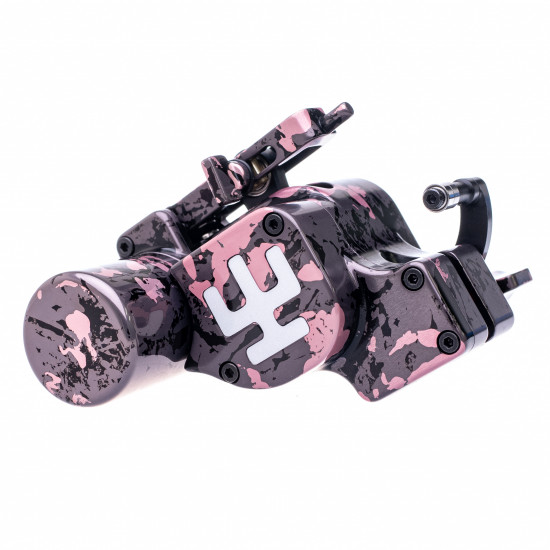 Avenger 3 Pro Camo Grey Pink
Avenger 3 Pro Camo Grey Pink Avenger 3 Pro Old Petroleum
Avenger 3 Pro Old Petroleum Avenger 3 Pro Money Maker
Avenger 3 Pro Money Maker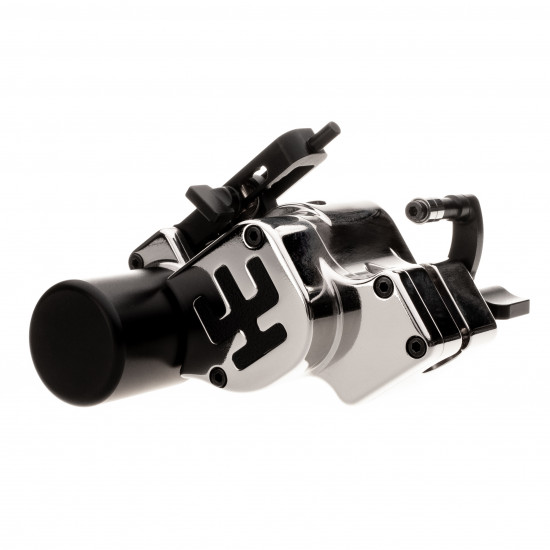 Avenger 3 Pro Nickel
Avenger 3 Pro Nickel Avenger 3 Pro Space
Avenger 3 Pro Space